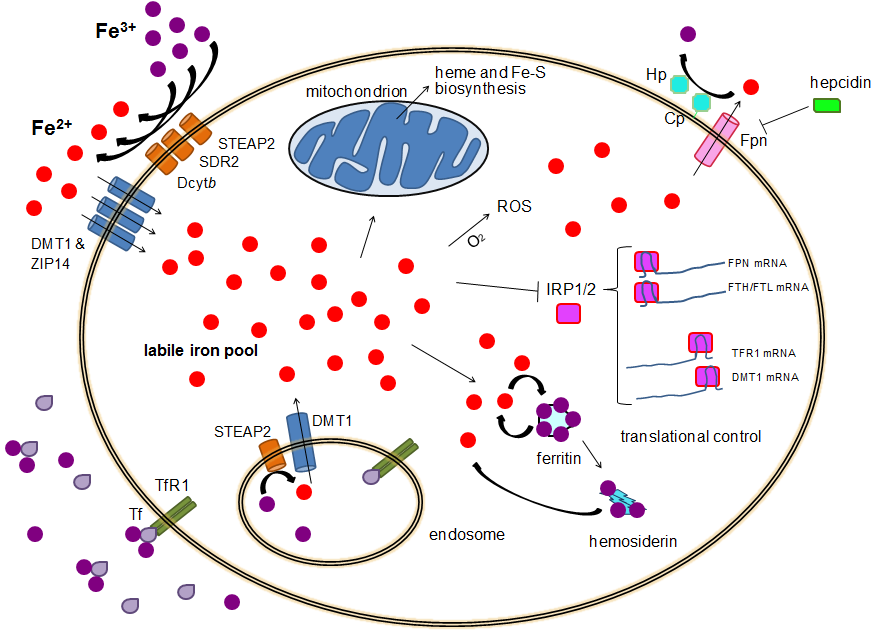|
GABARAP
Gamma-aminobutyric acid receptor-associated protein is a protein that in humans is encoded by the ''GABARAP'' gene. Function Gamma-aminobutyric acid A receptors ABA(A) receptorsare ligand-gated chloride channels that mediate inhibitory neurotransmission. This gene encodes GABA(A) receptor-associated protein, which is highly positively charged in its N-terminus and shares sequence similarity with light chain-3 of microtubule-associated proteins 1A and 1B. This protein clusters neurotransmitter receptors by mediating interaction with the cytoskeleton. Moreover, GABARAP has an important function in autophagosome mediated autophagy, since it is crucial for autophagosome formation and sequestration of cytosolic cargo into double-membrane vesicles, leading to subsequent degradation after fusion with lysosomes. In addition, GABARAP can mediate selective autophagy because it binds to so-called autophagic receptors (e.g. p62, NBr1), which bind and recruit specific cargo. Interactions ... [...More Info...] [...Related Items...] OR: [Wikipedia] [Google] [Baidu] |
TFRC
Transferrin receptor protein 1 (TfR1), also known as Cluster of Differentiation 71 (CD71), is a protein that in humans is encoded by the ''TFRC'' gene. TfR1 is required for iron import from transferrin into cells by endocytosis. Structure and function TfR1 is a transmembrane glycoprotein composed of two disulfide-linked monomers joined by two disulfide bonds. Each monomer binds one holo-transferrin molecule creating an iron-Tf-TfR complex which enters the cell by endocytosis. Clinical significance TfR1 as a potential new target in cases of human leukemia & lymphoma. InatherYs, in Évry, France, developed a candidate drug, INA01 antibody (anti-CD71) that showed efficacy in pre-clinical studies in the therapy of two incurable orphan oncohematological diseases: the adult T cell leukemia (ATLL) caused by HTLV-1 and the Mantle cell lymphoma (MCL). TfR1 expressed on the endothelial cells of the blood-brain barrier is used also in preclinical research to allow the delivery of large ... [...More Info...] [...Related Items...] OR: [Wikipedia] [Google] [Baidu] |
ULK1
ULK1 is an enzyme that in humans is encoded by the ''ULK1'' gene. Unc-51 like autophagy activating kinase (ULK1/2) are two similar isoforms of an enzyme that in humans are encoded by the ''ULK1/2'' genes. .html" ;"title="/sup>">/sup> .html" ;"title="/sup>">/sup> It is specifically a kinase that is involved with autophagy, particularly in response to amino acid withdrawal. Not many studies have been done comparing the two isoforms, but some differences have been recorded. Function Ulk1/2 is an important protein in autophagy for mammalian cells, and is homologous to ATG1 in yeast. It is part of the ULK1-complex, which is needed in early steps of autophagosome biogenesis. The ULK1 complex also consists of the FAK family kinase interacting protein of 200 kDa (FIP200 or RB1CC1) and the HORMA (Hop/Rev7/Mad2) domain-containing proteins ATG13 and ATG101. ULK1, specifically, appears to be the most essential for autophagy and is activated under conditions of nutrient deprivation by sev ... [...More Info...] [...Related Items...] OR: [Wikipedia] [Google] [Baidu] |
Protein
Proteins are large biomolecules and macromolecules that comprise one or more long chains of amino acid residues. Proteins perform a vast array of functions within organisms, including catalysing metabolic reactions, DNA replication, responding to stimuli, providing structure to cells and organisms, and transporting molecules from one location to another. Proteins differ from one another primarily in their sequence of amino acids, which is dictated by the nucleotide sequence of their genes, and which usually results in protein folding into a specific 3D structure that determines its activity. A linear chain of amino acid residues is called a polypeptide. A protein contains at least one long polypeptide. Short polypeptides, containing less than 20–30 residues, are rarely considered to be proteins and are commonly called peptides. The individual amino acid residues are bonded together by peptide bonds and adjacent amino acid residues. The sequence of amino acid residue ... [...More Info...] [...Related Items...] OR: [Wikipedia] [Google] [Baidu] |
Gene
In biology, the word gene (from , ; "...Wilhelm Johannsen coined the word gene to describe the Mendelian units of heredity..." meaning ''generation'' or ''birth'' or ''gender'') can have several different meanings. The Mendelian gene is a basic unit of heredity and the molecular gene is a sequence of nucleotides in DNA that is transcribed to produce a functional RNA. There are two types of molecular genes: protein-coding genes and noncoding genes. During gene expression, the DNA is first copied into RNA. The RNA can be directly functional or be the intermediate template for a protein that performs a function. The transmission of genes to an organism's offspring is the basis of the inheritance of phenotypic traits. These genes make up different DNA sequences called genotypes. Genotypes along with environmental and developmental factors determine what the phenotypes will be. Most biological traits are under the influence of polygenes (many different genes) as well as gen ... [...More Info...] [...Related Items...] OR: [Wikipedia] [Google] [Baidu] |


